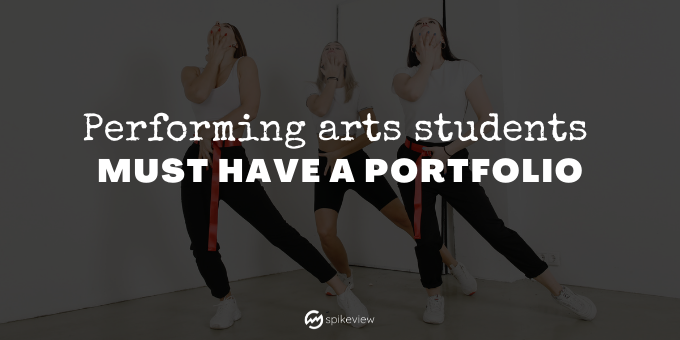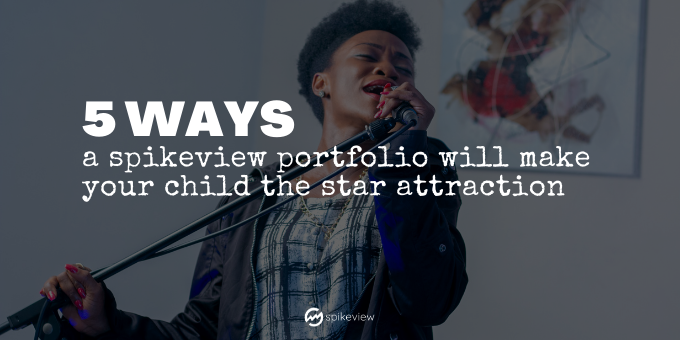Performing arts students MUST HAVE a portfolio
We all love to be entertained. Ballet, symphony, bands, theater, movies – we can’t get enough of the performing arts. The internet has opened countless opportunities for people of all ages and backgrounds to earn money without the permission of entertainment gatekeepers.
Your child can take guitar lessons on YouTube, build an audience on Spotify, sell merch on Etsy, and sell tickets to shows using Instagram. It’s an exciting time to encourage young people in the performing arts.
But there’s one thing that will keep your child from maximizing their success: waiting to create a portfolio.
A portfolio is a collection of your child’s greatest hits in performing arts. It’s usually the most impressive performances and experiences, but a portfolio can include something surprising. The purpose is to make an impact.
Without a portfolio, skills don’t matter. The greatest ballerina on earth won’t be accepted into the collegiate dance school if the admissions office doesn’t know what type of person she is. A portfolio goes beyond a list of accomplishments by giving a full narrative of the artist.
Don’t put this off. Even if your child isn’t sure if they want a career as a performer, creating and updating a portfolio will pay dividends later. Helping your budding artist stand out is exactly why spikeview was created.

Performing arts students must have a portfolio. Here are 5 ways a spikeview portfolio will make your child the star attraction, now and into the future.
1. Upload a short video introduction
Introverts and extraverts alike forget this important step. Your young artist needs to make a memorable first impression. When a talent agent opens the spikeview link, they’ll instantly form a deeper connection than the countless CVs and resumes full of text.
2. Organize experiences
Take some time considering how to sequence performances, accolades, behind-the-scenes clips, the educational journey, internships, and other experiences. The flow should be logical and compel the reviewer to keep reading and watching.
3. Include high quality photographs
Not everyone can afford to hire a professional photographer to show up at events to shoot. But the fact is, you don’t need to hire one. You just need to plan ahead for the type of shots and then make it happen. Standard DSLR cameras are more than adequate. You’ll want to use longer lenses for portraits and shorter (wide angle) lenses for physical context.
4. Document the learning journey
One thing every human has in common is that we’re all works in progress. Document classes, tutoring, and even online training. People like following the growth of an artist, so don’t be ashamed of your child’s skill level along the way. Embrace and showcase the learning journey!
5. Make short videos
The TikTok generation isn’t alone in their attraction to short video content. Instagram Reels, IGTV, YouTube Shorts, Snap…modern audiences consume short video clips that are entertaining and uplifting. Your child’s portfolio needs to wow the viewer, and video is one huge opportunity. Rather than adding a 10-minute segment, make a bunch of 15- or 30-second clips. For bonus impact, add some background music.
We could go on and on, but these five tips are plenty to help your young performing artist assemble a show-stopping portfolio.


[…] need to stand out. Make sure your spikeview portfolio is complete and share the link in your college applications and […]
[…] dance school if the admissions office doesn’t know what type of person she is. That’s where the spikeview performing arts portfolio sets you apart from the […]
[…] Musicians, dancers, makeup artists, actors… everyone dreaming of work in the performing arts industry needs a portfolio. But it’s not enough just to have a portfolio. You need that digital page to stand out from all the other resumes and portfolios. It’s a competitive world, but you can do this! […]